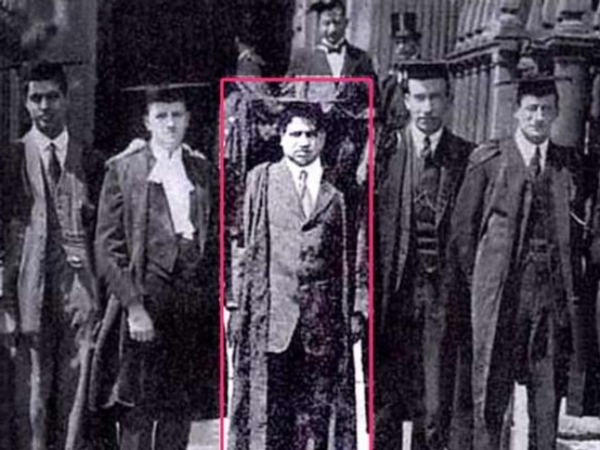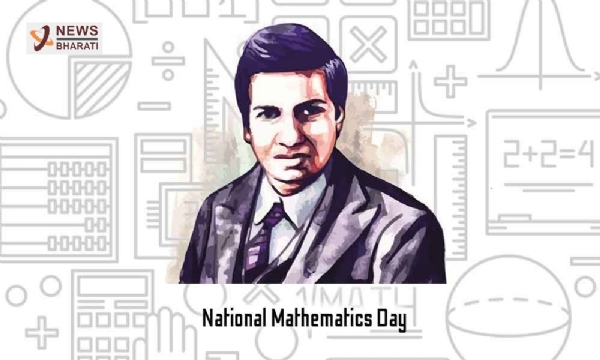Ramanujan and India's Growth in Mathematics
Srinivasa Ramanujan FRS (born 22 December 1887 as Srinivasa Ramanujan Aiyangar and died 26 April 1920) - an Indian mathematician who lived during British rule in India, despite having almost no formal training in pure mathematics, made significant contributions to mathematical analysis, number theory, infinite series, and continued fractions.
Total Views |
From 1200 BCE to the end of the 18th century, Indian mathematics flourished on the Indian subcontinent. Scholars such as Aryabhata, Brahmagupta, Bhaskara II, and Varhamihira made significant contributions to Indian mathematics during the classical period (400 CE to 1200 CE). The modern decimal number system was first recorded in Indian mathematics. Indian mathematicians made important early contributions to the study of zero as a number, negative numbers, arithmetic, and algebra. Furthermore, trigonometry was advanced in India, and the modern definitions of sine and cosine were developed there. These mathematical concepts were transmitted to the Middle East, China, and Europe, where they spawned further developments that now serve as the foundations for many areas of mathematics.
We do know that the Harappans used a consistent system of weights and measures. An examination of the discovered weights reveals that they belong to two decimal series, with each decimal number multiplied and divided by two, yielding the main series ratios of 0.05, 0.1, 0.2, 0.5, 1, 2, 5, 10, 20, 50, 100, 200, and 500. Several length measuring scales were also discovered during excavations. The first was a decimal scale based on a unit of measurement of 1.32 inches (3.35 centimetres), known as the "Indus inch." Of course, ten units equals 13.2 inches, which is a reasonable measurement for a "foot." Other parts of Asia and beyond use a similar measure based on the length of a foot. Another scale was discovered when a bronze rod was discovered with lengths marked in 0.367 inch increments. The precision with which these scales are marked is certainly surprising. Now, 100 units of this measurement equals 36.7 inches, which is the length of a stride. Measurements of the excavated ruins of buildings show that the Harappans used these units of length accurately in construction.
On the occasion of his birth anniversary, let us remember the great contribution of Late Shrinivasa Ramanujan.

Srinivasa Ramanujan FRS (born 22 December 1887 as Srinivasa Ramanujan Aiyangar and died 26 April 1920) was an Indian mathematician who lived during British rule in India. Despite having almost no formal training in pure mathematics, he made significant contributions to mathematical analysis, number theory, infinite series, and continued fractions, including solutions to previously unsolvable mathematical problems. According to Hans Eysenck, Ramanujan initially developed his own mathematical research in isolation: "He tried to interest the leading professional mathematicians in his work, but failed for the most part." What he had to show them was too novel, too unfamiliar, and presented in unusual ways for them to be bothered. In 1913, he began a postal correspondence with the English mathematician G. H. Hardy at the University of Cambridge, England, in search of mathematicians who could better understand his work. Hardy arranged for Ramanujan to visit Cambridge because he thought his work was extraordinary. Hardy noted in his notes that Ramanujan had produced ground-breaking new theorems, including some that "completely defeated me; I had never seen anything in the least like them before," as well as some recently proven but highly advanced results. Ramanujan independently compiled nearly 3,900 results during his brief life (mostly identities and equations). Many of his original and highly unconventional results, such as the Ramanujan prime, the Ramanujan theta function, partition formulae, and mock theta functions, have opened up entirely new areas of work and inspired a vast amount of additional research. Except for a dozen or two, all of his thousands of results have now been proven correct. The Ramanujan Journal, a scientific journal, was founded to publish work in all areas of mathematics influenced by Ramanujan, and his notebooks—which contain summaries of his published and unpublished results—have been analyzed and studied as a source of new mathematical ideas for decades since his death.
By the age of 11, he had exhausted the mathematical knowledge of two college students who stayed at his house. Later, he was given a book on advanced trigonometry written by S. L. Loney. By the age of 13, he had mastered this while independently discovering sophisticated theorems. By the age of 14, he had received merit certificates and academic awards that he had continued to receive throughout his school career, and he had helped the school with the logistics of assigning its 1,200 students (each with different needs) to its approximately 35 teachers. 27 He completed mathematical exams in half the time allotted and demonstrated knowledge of geometry and infinite series. (Source : Wikipedia)
Ramanujan, a deeply religious Hindu, attributed his significant mathematical abilities to divinity, claiming that the mathematical knowledge he displayed was revealed to him by his family goddess Namagiri Thayar. "An equation has no meaning for me unless it expresses a thought of God," he once said.

